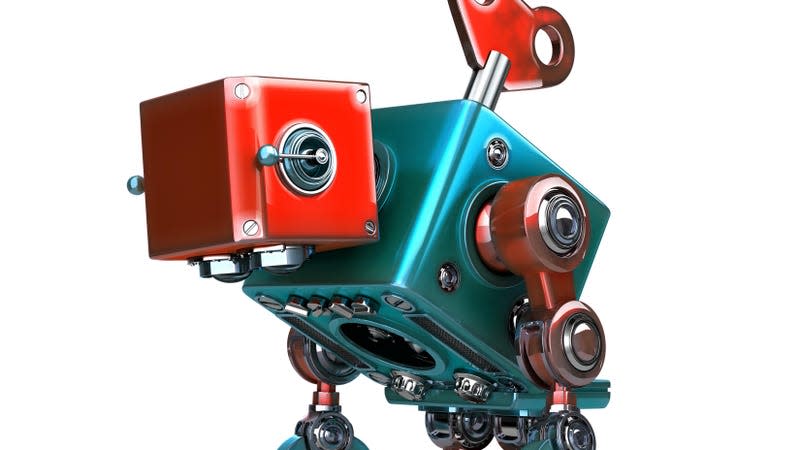
As 2023 stumbles towards its close, it’s clear we’re preparing to enter a world that will soon be filled to the brim with robots. Science fiction tells us that AI will soon gain sentience and inevitably crush humanity in its never-ending quest for power. I’ll believe it when I see it. For now, the robots that surround us are pitiful creatures, flailing around as they struggle to complete their Sisyphean tasks.
Generally, we build robots for work we don’t want to do ourselves, or at least work we’d rather not pay someone else to do. There’s something inherently sad about a seemingly life-like machine doomed to repeat the same task again and again, particularly when it fails. It’s even more discouraging when they do their jobs well and we abandon them like the automatons they are because, despite our tendency to fall in love with robots, they are not living things, and they don’t have feelings.
Read more

Since the New York Times is the paper of record, it’s significant, in one way or another, when the newspaper uses a word for the very first time. That’s the premise behind @NYT_First_Said, a robot that tweets when the Times prints a word it’s never used before. Recent examples include “autonoetic,” “herbalicious,” and “pocketlessness.”
Congratulations to this robot that tweets words the first time they’re printed in the New York Times. Today it got to tweet its own name https://t.co/rVc7LBPYbv
— Thomas Germain (@thomasgermain) July 7, 2019
People like this robot, but it’s mostly thankless work, with one exception. Back in 2019, the New York Times wrote an article about it, which means the robot got to tweet its own name. It was the first and almost certainly the last time @NYT_First_Said will ever get to talk about itself, which has the undeniable ring of melancholy to it.
The robot is no longer running on Twitter, but you can see its work on Bluesky and Mastodon.
Curiosity
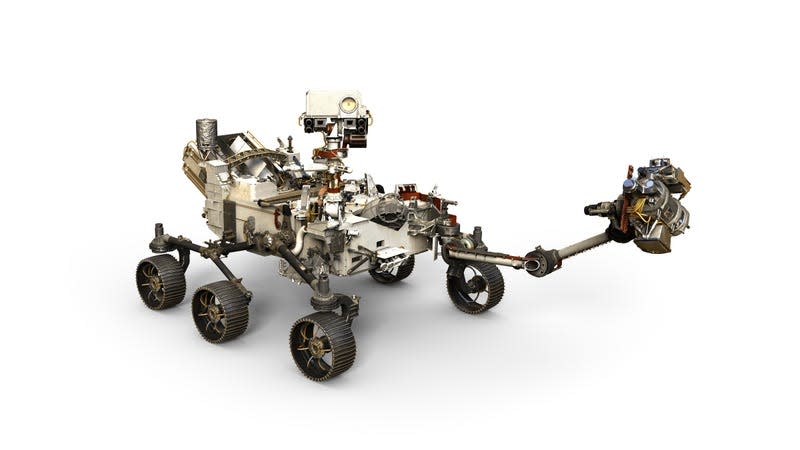
Right now, the Mars rover Curiosity is trudging through the dusty terrain of the red planet, where it’s been hard at work for over ten years. Among its many onboard devices, the car-sized robot has a machine on its belly called the “sample-analysis unit.” Curiosity uses its mechanical arm to put soil in the sample-analysis unit, which then vibrates at different frequencies to sort the dirt into different little cups. Then the cups heat up to release gasses, which are studied in different ways.
2013 marked the first anniversary of Curiosity’s arrival on Mars, and the scientists at NASA thought of another way to use the sample-analysis unit. They programmed it to vibrate out a little tune. There, all alone on a planet 236.6 million miles from home, Curiosity sang happy birthday to itself.
Curiosity has had ten birthdays since then, but the power used up for singing is a limited resource. NASA only let Curiosity sing to itself that one time. On a less tragic note, robot lawnmower company Husqvarna had a fleet of its machines use their alarm systems to sing happy birthday to Curiosity in 2022, celebrating the rover’s big ten.
hitchBOT
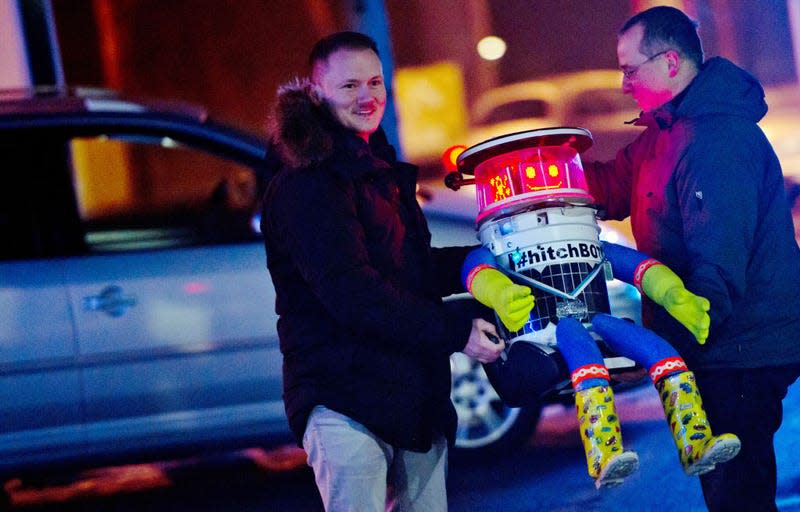
In 2015, a group of Canadian researchers set up a social experiment. It was called hitchBOT, a boot-wearing, friendly-looking robot that sat on the side of the road asking drivers for a ride. The idea was for hitchBOT to hitchhike from Boston to San Francisco, relying on (and testing) the kindness of strangers.
“Please pick me up and put me in your vehicle,” hitchBOT would explain to passers-by. “Now I want to experience the American dream. Along with my newly shined wellies, I will be bringing a bucket list I made along with the help of my family.”
For the first two weeks, things went great — until hitchBOT made it to Philadelphia, where it learned what the real American dream is all about. hitchBOT was found beheaded with its arms ripped off, cutting its journey short when it had barely even started. We’ve all seen Terminator; the people of Philadelphia don’t take any chances.
Consumer Report’s Phone Flipper
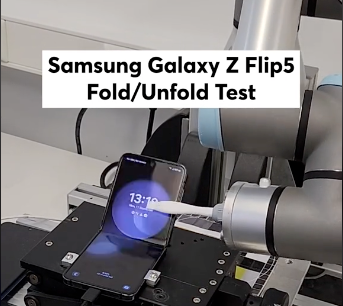
Consumer Reports (where I used to work) takes its product reviews very seriously. When Samsung released a folding phone earlier this year, the publication built a robot to put its hinge to the test. It’s basically an arm that just sat there and flipped the phone open, and closed, and open, and closed, over and over—30,000 times, in fact.
Imagine a world where your entire reason for being was to flip open a phone. There must be more to life. The Samsung Galaxy Z Flip5 passed the test, but at what cost to robot wellbeing?
The NYPD’s Robocop
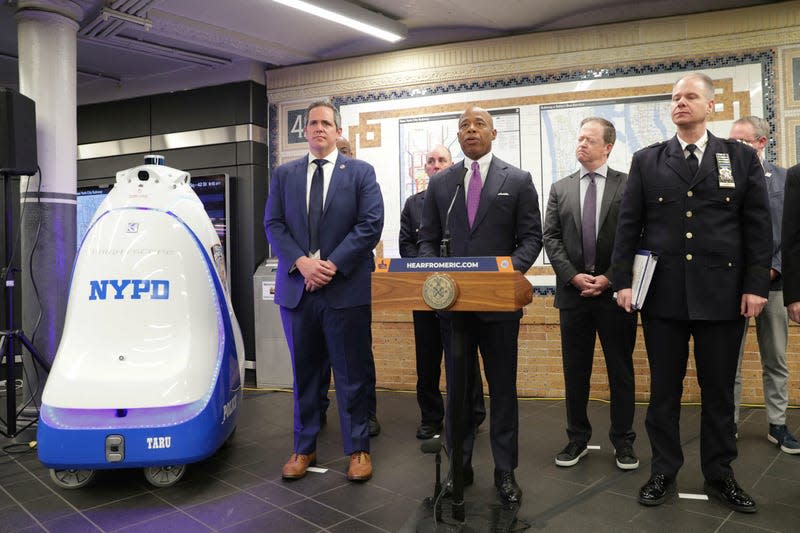
If there’s one thing New York City’s Mayor Eric Adams loves more than taking allegedly illegal donations from the Turkish government, it’s the NYPD. Adams is a former police captain, and he’s fond of giving the cops astronomically expensive new toys.
That includes robot dogs, and, most recently, a machine called K5, a 400-pound, 5-foot-3 robocop that looks like some kind of busted R2-D2. The robot patrols the Times Square subway station at night. Imagine getting switched on for the first time to learn not only that you’re a cop, but that you’re going to spend the rest of your life in Times Square. K5 is lucky robots don’t have feelings.
San Francisco’s Self-Driving Cars
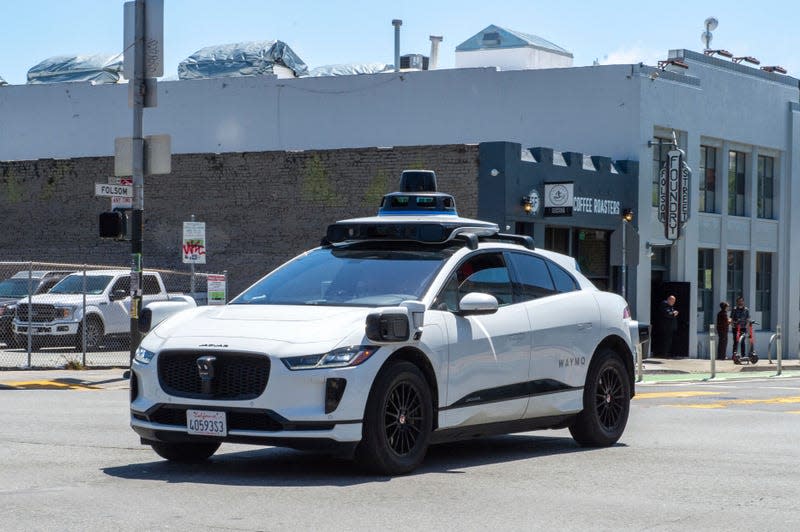
Waymo and Cruise are two of the many cursed organizations that make self-driving cars. Earlier this year, they got permission from the city of San Francisco to run their autonomous taxis through the city streets 24 hours a day. It was a fiasco that saw accidents, traffic jams, people having sex in the back of the cars, and a host of other issues. There was also an ongoing protest in which people realized they could cripple the cars by putting traffic cones on their hoods. After weeks of humiliation, Cruise got its permit revoked because — surprise — it turns out their cars are dangerous. One of Cruise’s taxis dragged a pedestrian through the street. Whoops!
LA’s Vandalized Food-Delivery Bots
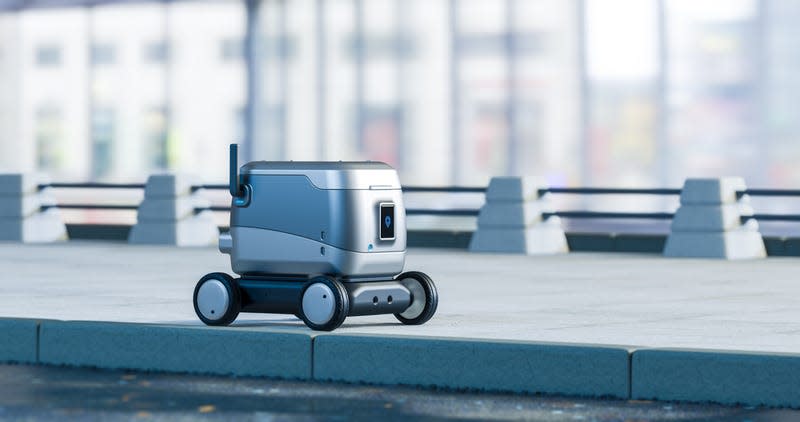
In Los Angeles, the sidewalks are now crowded by autonomous food-delivery robots, and the internet is filled with people attacking and vandalizing them. You might be noticing a theme here. No matter what city you’re in, it seems like people don’t like private companies sending out robots to patrol public spaces. There are lots of good reasons for that, including the fact that LA’s UberEats food-delivery robots give cops footage from their cameras. No one likes a narc, but it can’t feel good to get flipped over when you’re just trying to drop off some sushi.
The Robots of Chernobyl
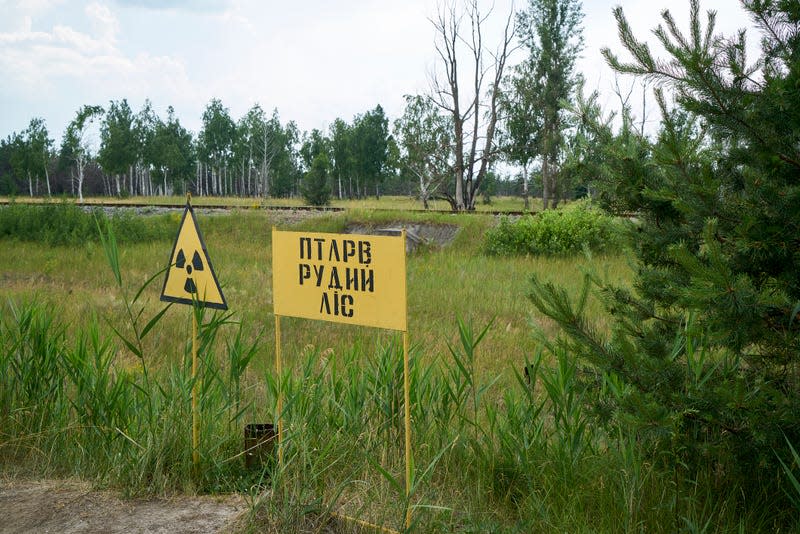
The Chernobyl nuclear disaster was an unspeakable human disaster. It also marked the beginning of a sad saga for a group of robots (though one that was obviously far less tragic). The nuclear waste needed to be cleaned up, but it was so radioactive that there was no system in place to deal with it. The Soviet government sent in around 60 robots to clear debris. Many of them couldn’t handle the effects of the radiation, suffering electronic and battery failures and breaking down, ultimately becoming contaminated nuclear waste themselves.
“We learned that robots are not the great remedy for everything,” Valery Legasov of the Kurchatov Institute of Atomic Energy in Moscow said in 1987. “Where there was very high radiation, the robot ceased to be a robot—the electronics quit working.”
Decades later, the robots are finally getting a little recognition, with brief appearances in the 2019 HBO Chernobyl mini-series on the disaster. For a deeper dive, there’s also a great documentary short on the Chernobyl robots on YouTube.
“Can’t Help Myself”

Maybe it’s cheating to include a robot that was built for the explicit purpose of demonstrating futility. “Can’t Help Myself” is an art piece by Sun Yuan and Peng Yu, commissioned for the Guggenheim Museum. It’s an industrial robot that sits in the middle of a pool of gooey, blood-like red liquid. It’s equipped with a big scraping tool and visual recognition sensors and is charged with the impossible task of cleaning up the goop. As the liquid inevitably seeps towards the walls, the robot frantically moves to try and contain it, a task which could never be completed. It ran for years at various exhibitions until 2019, when it ran out of hydraulic fluid and slowly died.
Cassini

Cassini–Huygens was a spacecraft launched by NASA in 1997, built to explore Saturn and its moons. After traveling millions of miles, Cassini finally reached the Saturn system in 2004. There, it orbited the planet for 13 years, a journey that included visits to Venus and Saturn’s moons Enceladus and Titan. It was responsible for a long list of groundbreaking discoveries, but its time was limited. The engineers at NASA sent Cassini on one final mission, an operation dubbed “The Grand Finale.” NASA directed it to crash into Saturn in order to avoid potentially contaminating the planet’s moons, which may contain extraterrestrial life. On September 15, 2017, Cassini’s mission ended as it burned up Saturn’s atmosphere, culminating its nearly two decades of service with a fiery death.
More from Gizmodo
Sign up for Gizmodo’s Newsletter. For the latest news, Facebook, Twitter and Instagram.







